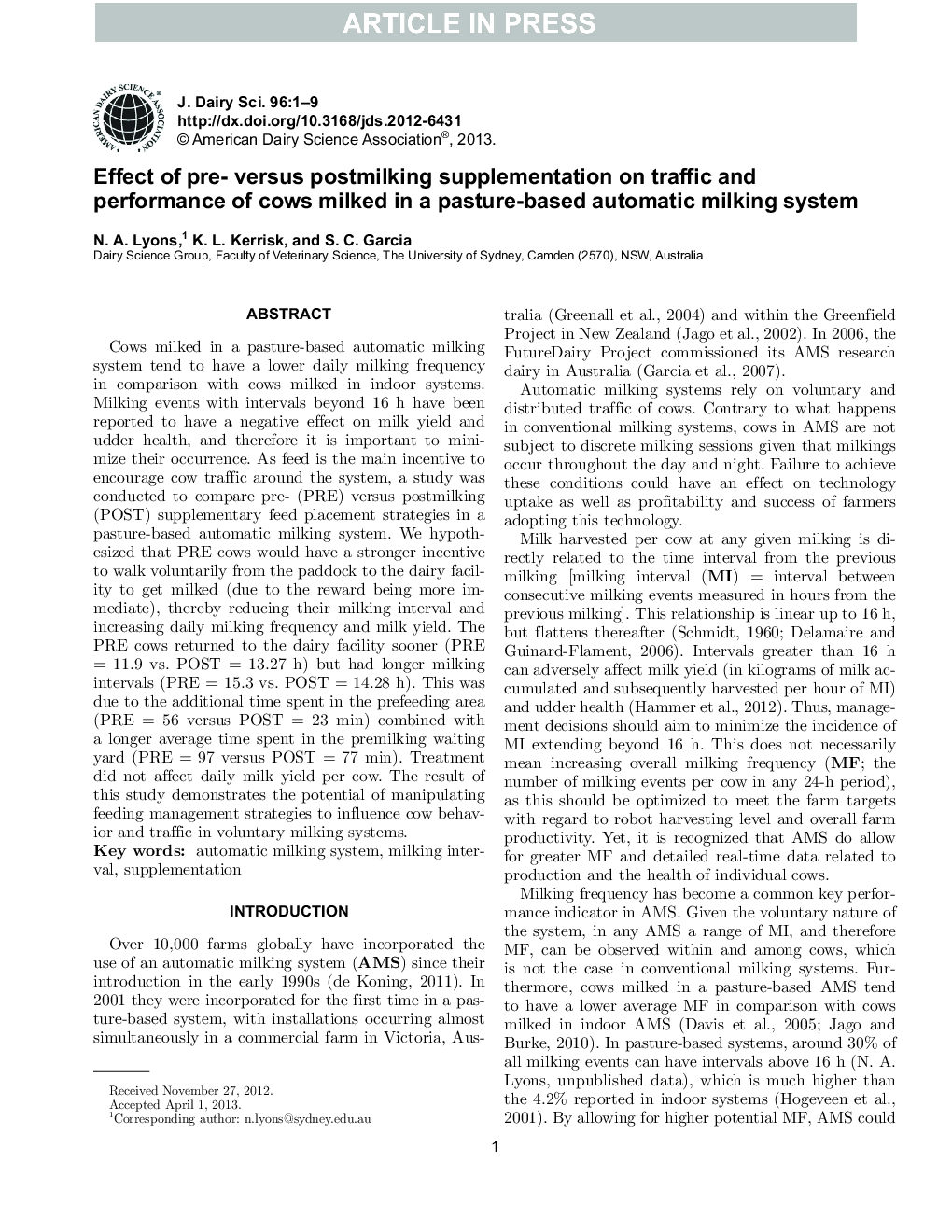| Article ID | Journal | Published Year | Pages | File Type |
|---|---|---|---|---|
| 10977976 | Journal of Dairy Science | 2013 | 9 Pages |
Abstract
Cows milked in a pasture-based automatic milking system tend to have a lower daily milking frequency in comparison with cows milked in indoor systems. Milking events with intervals beyond 16Â h have been reported to have a negative effect on milk yield and udder health, and therefore it is important to minimize their occurrence. As feed is the main incentive to encourage cow traffic around the system, a study was conducted to compare pre- (PRE) versus postmilking (POST) supplementary feed placement strategies in a pasture-based automatic milking system. We hypothesized that PRE cows would have a stronger incentive to walk voluntarily from the paddock to the dairy facility to get milked (due to the reward being more immediate), thereby reducing their milking interval and increasing daily milking frequency and milk yield. The PRE cows returned to the dairy facility sooner (PREÂ =Â 11.9 vs. POSTÂ =Â 13.27Â h) but had longer milking intervals (PREÂ =Â 15.3 vs. POSTÂ =Â 14.28Â h). This was due to the additional time spent in the prefeeding area (PREÂ =Â 56 versus POSTÂ =Â 23Â min) combined with a longer average time spent in the premilking waiting yard (PREÂ =Â 97 versus POSTÂ =Â 77Â min). Treatment did not affect daily milk yield per cow. The result of this study demonstrates the potential of manipulating feeding management strategies to influence cow behavior and traffic in voluntary milking systems.
Related Topics
Life Sciences
Agricultural and Biological Sciences
Animal Science and Zoology
Authors
N.A. Lyons, K.L. Kerrisk, S.C. Garcia,
